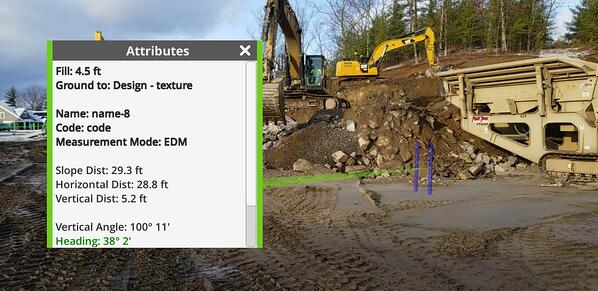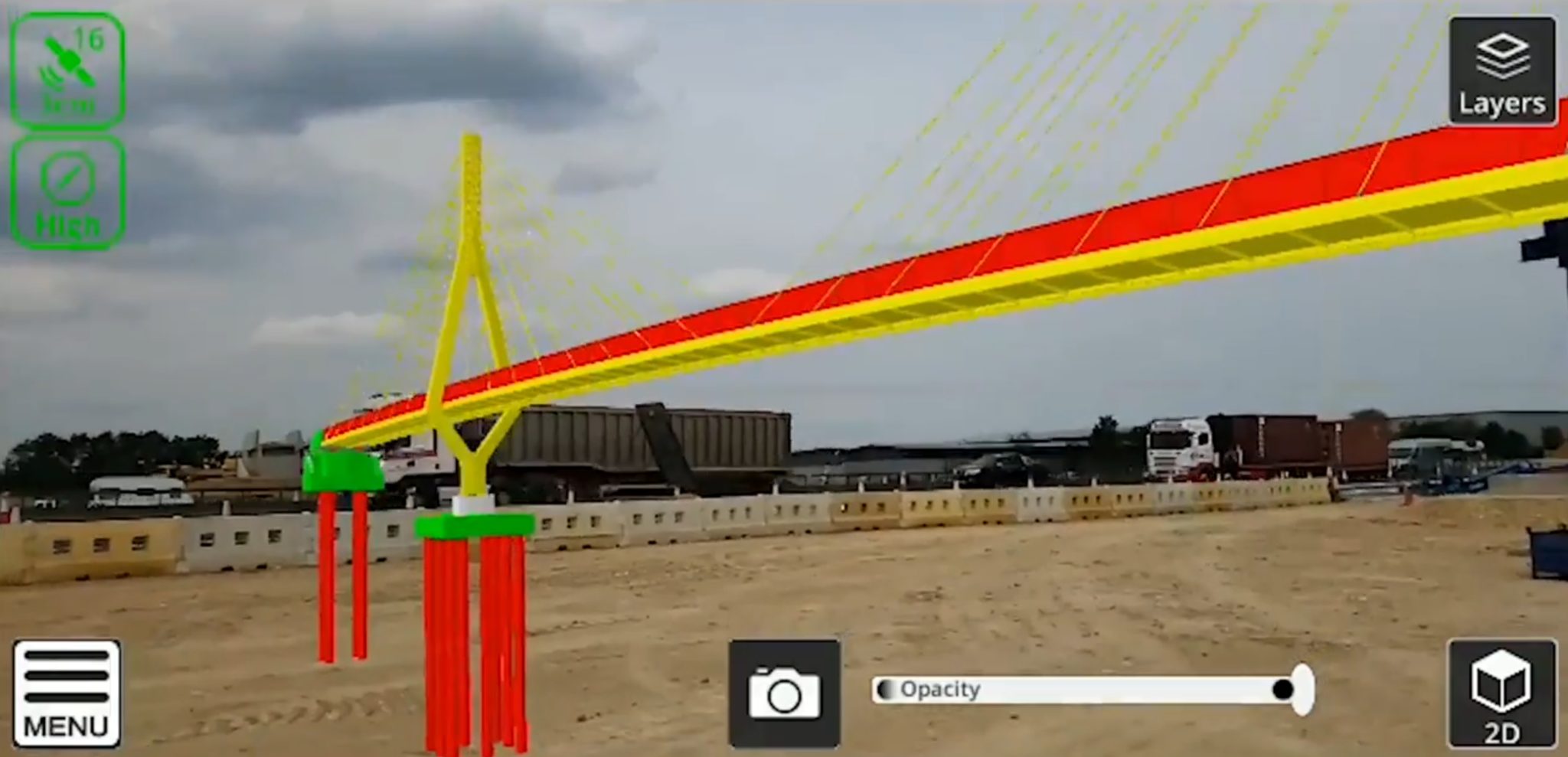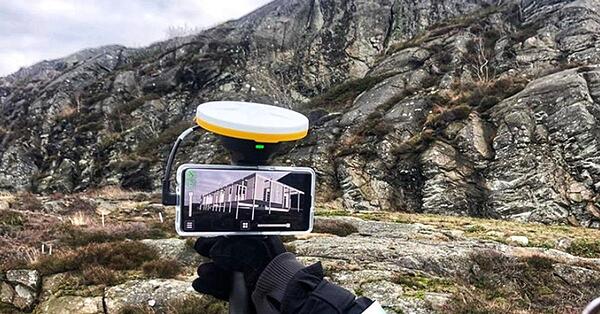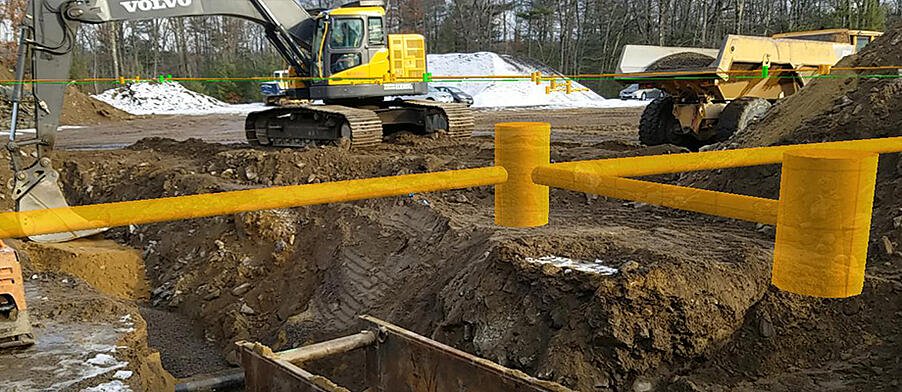Augmented Reality and Construction: an Overview
“Technology is giving us the opportunity to do all of the construction inside in the office… with a computer helping us not do the wrong thing.”
– Fredrik Bergstrom, Gothenburg, Sweden
A couple weeks ago, we introduced you to Pat L’Heureux, a project engineer with Severino Trucking in New Hampshire, USA. Pat gave us a deep dive into his job, explaining how he uses SiteVision to alleviate many of the obstacles he faces every day. But beyond listing his own pain points, Pat’s description also hinted at augmented reality’s applicability in construction industry use cases far beyond his own. So today, we’ll discuss how SiteVision can solve problems and alleviate stress in a wide range of construction planning and execution tasks—from initial planning to the teams in the field to wrapping the job and moving on.
But first, back to Pat. His biggest problems, he says, are always related to communication and information sharing. “There is a definite disconnect between the field and office, in our company and as an industry,” Pat explains. “These groups are treated as separate entities, not efficiently sharing data and there is a lot of redundancy, inefficiency, and error that gets introduced.” Sound familiar? If you work in construction, it probably does—here at Trimble, we hear over and over again from customers that bridging communication and information gaps are their biggest organizational need. But how to do it?
As you may have guessed, that’s where SiteVision comes in. “I was able to show everyone at a site meeting exactly what the project was going to look like with the use of SiteVision,” says Pat. “SiteVision is a great tool to present data to all parties involved; investors, engineers, contractors, neighboring owners, and users.” For project engineers like Pat, augmented reality (and the communication it facilitates) has become an integral step in the planning and execution of road-building projects ranging from roads for tiny subdivisions to large DOT highlights projects.
 Pat using SiteVision to check cut/fill on a job-site using the Electronic Distance Measurement function.
Pat using SiteVision to check cut/fill on a job-site using the Electronic Distance Measurement function.
But the strengths of the SiteVision platform extend way beyond the earthworks. Augmented reality brings real-world utility to virtually any construction environment. So as promised, here are three very different examples of SiteVision’s application in a variety of industries.
1. Surveying and land assessment
For Mark Lawton, chief engineering surveyor at Skanska UK, adding augmented reality to his toolbox has been nothing short of revolutionary. “You must have good data in to get good data out,” cautions Mark. “As a surveyor, I have to convey accurate information to the decision makers, and SiteVision allows this.” The construction industry—and the surveying community in particular— are, according to Mark, ready and eager to adopt this technology. “We use existing models already, and now we can use SiteVision to push these through to the field,” he explains. Visualizing progress on the A14 project
Visualizing progress on the A14 project
As chief surveyor, the safety of his teams in the field is Mark’s top concern. “We’ve already used this with the utilities team, the environmental team, and the general public,” he says. For leaders like Mark, it’s the visceral nature of SiteVision—the ability to see what you need to do in the actual place you need to do it—that helps ensure safety on the job site. “For workers’ safety, showing the actual models in the field to better explain to the workforce is the most critical. Then they’re empowered to make better engineering and technical decisions.”
Mark’s journey to augmented reality has been captured in a very real video >
2. Infrastructure planning and installation
Andreas Haugbotn is a 3D Designer at ViaNova, a prominent, award-winning infrastructure design firm in Sandvika, Norway. Andreas and ViaNova had been looking at various 3D AR solutions for many years: hardware and software that can bring the 3D design model to the field and project it over the real-world view of existing terrain and structures—precisely geospatially registered, to scale, from any vantage point, and all in real time. Andreas admits that he was first attracted to the simple design. “It is handheld, low cost, and does not require special training for our people,” he says. “We were able to run it on a Galaxy 10+ phone.”
Ease of use didn’t come at the expense of spatial precision. “It is quite good; we get about 3cm precision in the horizontal,” boasts Andreas. That spatial precision was necessary for ViaNova’s first big test of SiteVision: a major rail bridge project. Within a few weeks of implementation, SiteVision proved to be the catalyst for making crucial design decisions. “We immediately gained an understanding of what would be built, and from this we changed the original design,” says Andreas, who adds that he intends to deploy the new system as a standard tool used in day-to-day operations for all future ViaNova projects—large and small.
We’ll have more of Andreas’ story and some technical examples of his SiteVision workflow in the coming weeks.
3. Residential and commercial construction
Fredrik Bergstrom is CEO and owner of FMT AB, a medium-sized excavation and construction company based in Stockholm, Sweden. In the 18 months since he began using SiteVision, it has become an invaluable tool at multiple product stages. “With augmented reality, we have the ability to solve a problem before it occurs, and we can build things onsite before they exist.” Negotiations with architects and suppliers have been particularly improved, Fredrik notes, by “filling the gap between the architects, the people in the office, and the people in the field.”

In particular, SiteVision has revolutionized the way Fredrik interacts with potential customers at the beginning of jobs. “At first, my intention with SiteVision was just putting a house or something on the ground. I remember the first time I managed to do this and how cool that was,” he recalls. “From that day on, we changed some workflows. Suddenly, we could use all of our 3D models and show them to our customers.” This has resulted in more jobs won in competitive bidding situations that Fredrik might well have lost in the past. “I have the advantage of using 3D modeling and showing my customers what we can deliver for a certain amount of money.”
For more on Fredrik’s story, click here >
Three very different use cases—four, if you count Pat—from very different parts of the world. But in the end, the case for SiteVision sounds the same in each location. The simplicity with which it gets everyone on the same page using the most precise information available makes augmented reality more than just the future of the construction site. It’s the present.

Want to learn more about SiteVision and augmented reality for construction, click here >
Resources:
Trimble SiteVision Support Portal
Trimble SiteVision v1.10 Release Notes
More Trimble SiteVision
Subscribe to the Trimble SiteVision blog so you'll be alerted with the latest posts.


